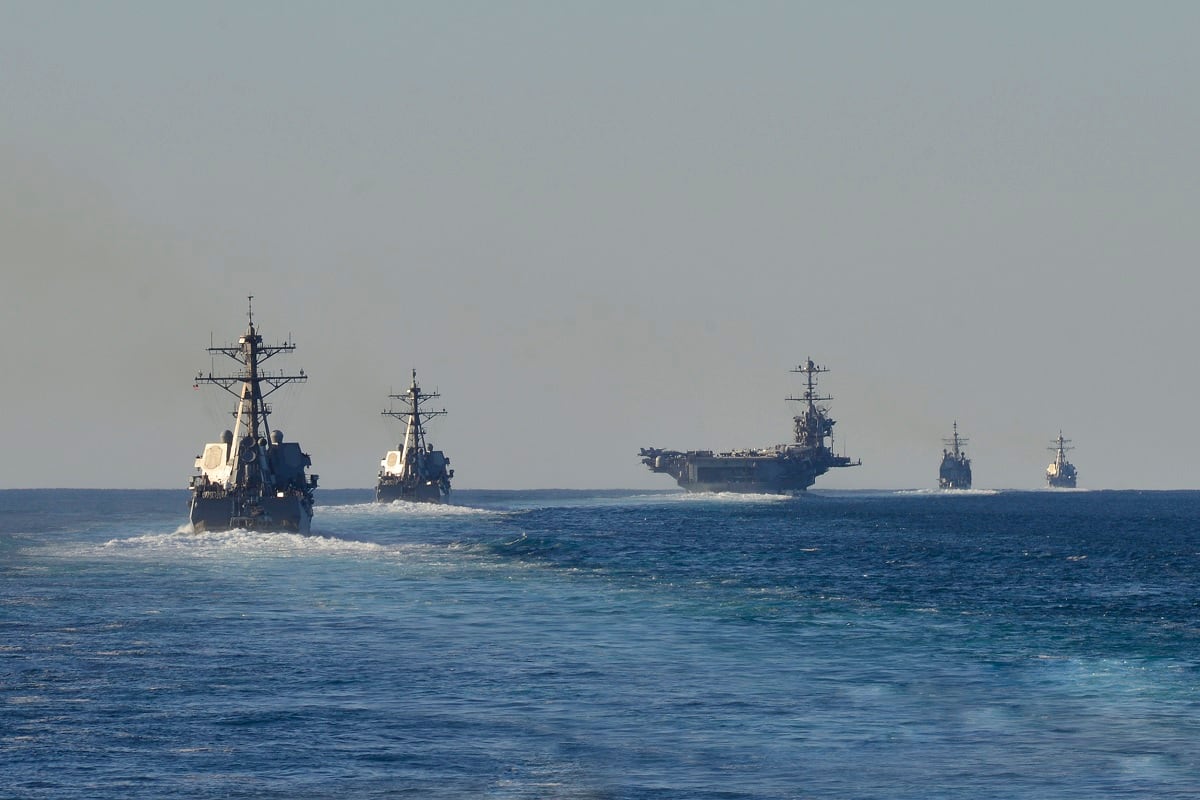A federal financial watchdog is questioning whether the Pentagon will ever reach its ambitious goal of a 355-ship Navy.
This month’s report from the non-partisan Congressional Budget Office analyzed the sea service’s strategy of extending the life of current ships while buying more new vessels to hit 355 over the next three decades.
The Navy’s latest shipbuilding plan was submitted to Congress in February, its first since 2017. Currently sitting at 285 battle force ships, the Navy plans to buy 301 new vessels between 2019 and 2048.
“If the Navy adheres to the schedule for retiring ships outlined in the 2019 plan, it would not meet its goal of 355 ships at any time over the next 30 years,” the report states.
As part of its race to 355, the service announced it also wants to extend the life of its destroyers to 45 years — an extra five to 10 years of service — while boosting the service lives of seven attack submarines from 33 years to 43 years, the report states.
Those life extensions could get the Navy to 355 by 2034, the CBO notes, “but would fall short of the Navy’s specific goals for some types of ships.”
RELATED

When it comes to cost, CBO cautions that reaching 355 ships would require largely unprecedented amounts of funding from Congress.
The Navy’s most recent estimates state it would cost $631 billion over 30 ears, or an average of $21 billion annually. That’s $3.3 billion more per year than the Navy’s 2017 estimates — and it’s still probably not enough.
CBO researchers estimate that it likely will cost an average of $26.7 billion annually to buy all the new ships.
And other expenses — including refueling nuclear-powered aircraft carriers and outfitting new ships with equipment after they are built — would likely drive the funding needed to about $28.9 billion a year, according to the CBO’s estimates.
“It excludes other activities typically funded from the Navy’s budget account for ship construction that would, in CBO’s estimate, add $2.1 billion to the Navy’s average annual shipbuilding costs under the 2019 plan,” the report states.
To put into perspective how off the Navy’s estimates might be, this level of funding would be 80 percent higher than the Navy’s average shipbuilding budget over the past three decades, according to CBO.
If the Navy received the same average amount of shipbuilding dollars for each of the next 30 years that it has received over the past 30 years, “the service would not be able to afford its 2019 plan,” the CBO report states.
CBO’s estimate that the 355-ship plan would cost $26.7 billion annually for new ships alone is nearly double the historical funding average of $13.6 billion, according to the report.
It’s also 50 percent more than the average shipbuilding budget of the last six years, “a period of increasing shipbuilding appropriations,” the report states.
RELATED

In the Fiscal 2019 defense spending bill, Congress hiked funding to restore readiness in the Navy and Marine Corps, including spending $24.2 billion on six warships, three fast attack subs, two oilers and a mix of expeditionary sea vessels and a salvage boat.
But admirals warned their sailors that the congressional largesse wasn’t likely to last longer than a few years, much less 30.
The CBO report also questions whether the Navy is fulling accounting for other expenses needed to run a larger fleet.
“Although the cost of extending the ships’ service life is relatively small compared with the cost of buying all the new ships the Navy wants, the cost of operating and maintaining a 355-ship fleet over 30 years would be much greater than either the cost of purchasing the new ships or the recent budgets for operating today’s fleet,” the CBO report states. “Recruiting and training those sailors would require more civilian and military positions ashore; additional ships would lead to larger maintenance budgets; and those extra ships and crews would consume more fuel and supplies.”
Read the full report here.
Geoff is the managing editor of Military Times, but he still loves writing stories. He covered Iraq and Afghanistan extensively and was a reporter at the Chicago Tribune. He welcomes any and all kinds of tips at geoffz@militarytimes.com.





